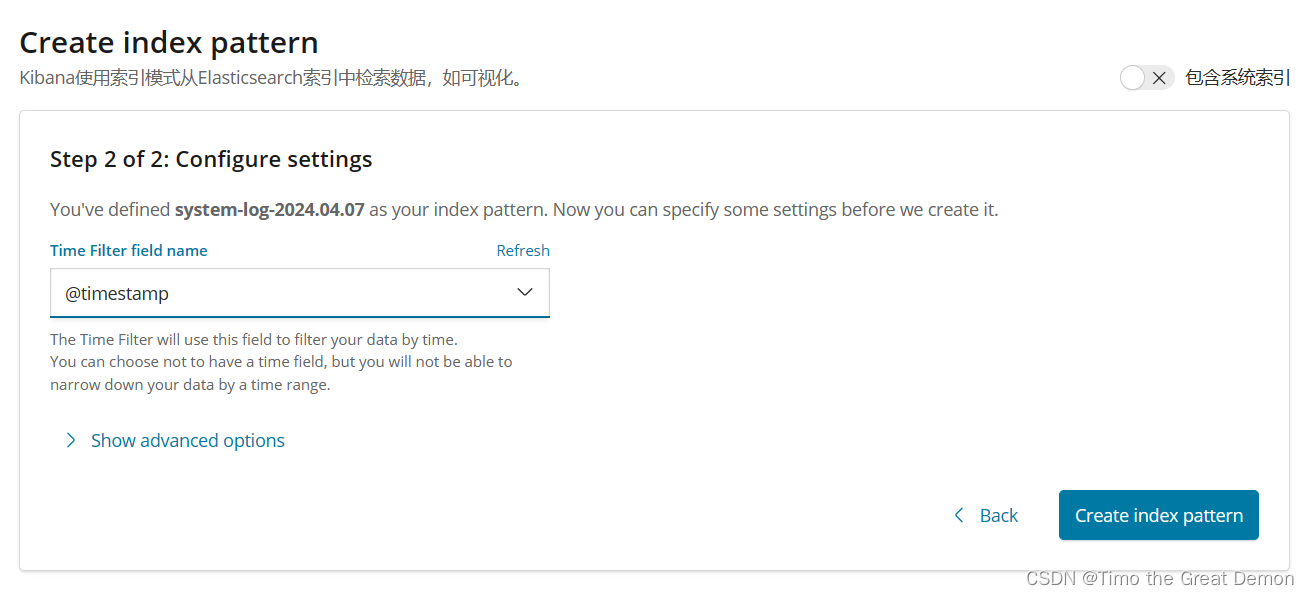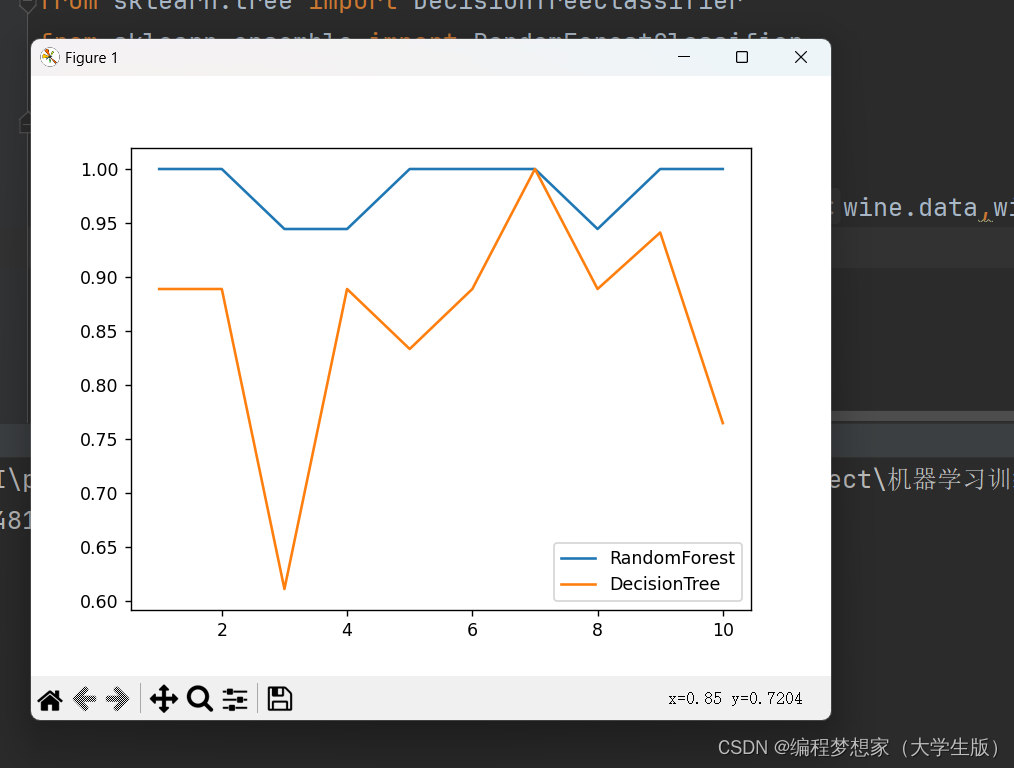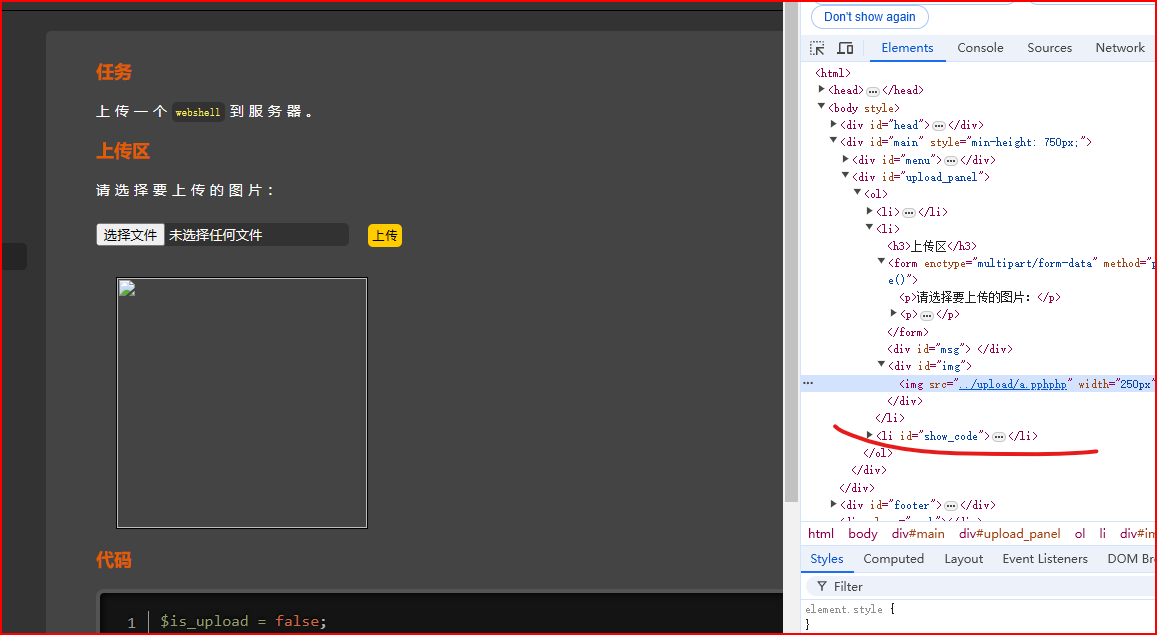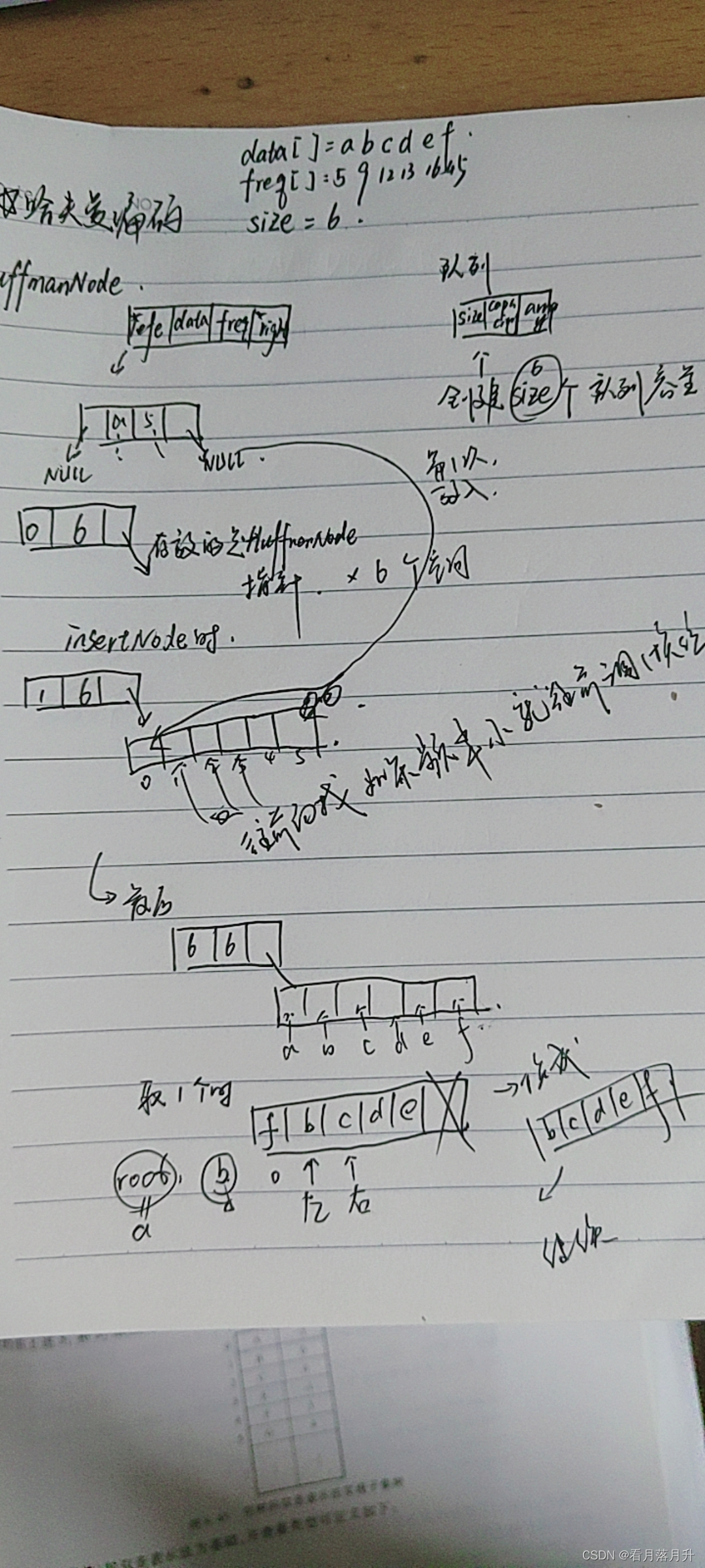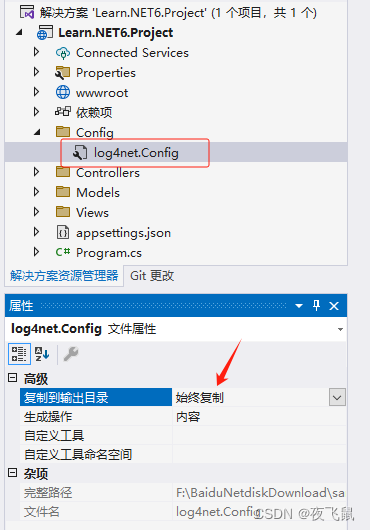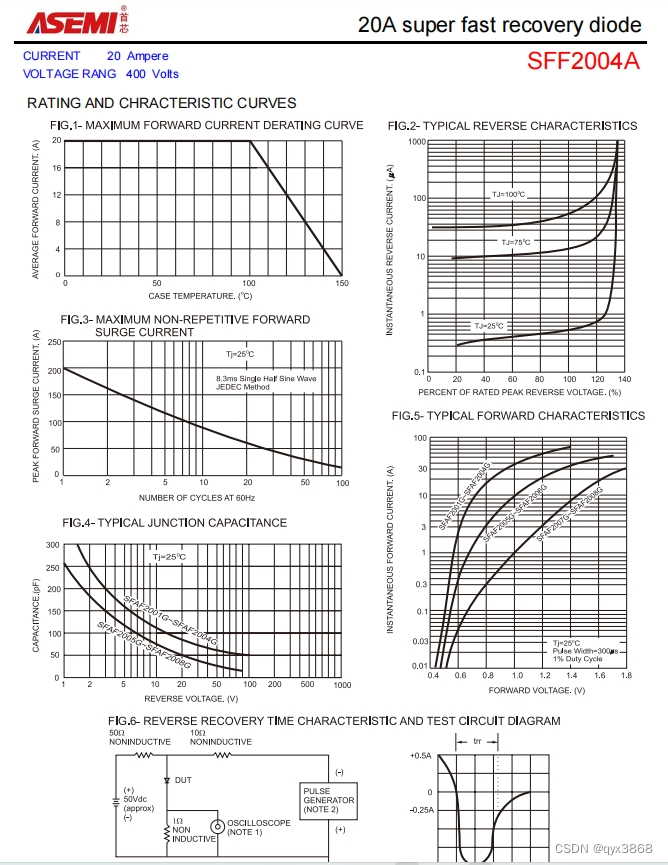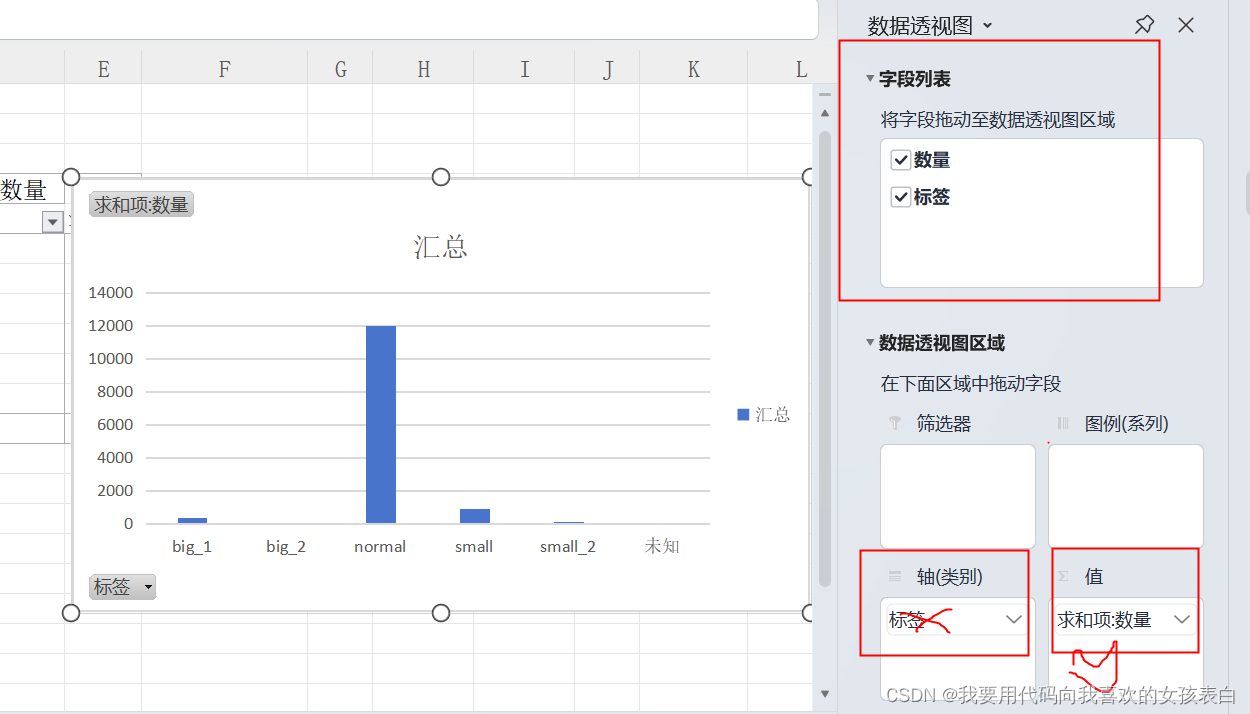第十六天,二叉树part03💪💪💪,编程语言:C++
目录
513找到左下角的值
112.路径总和
113.路径总和II
106从中序与后序遍历序列构造二叉树
105.从前序与中序遍历序列构造二叉树
总结
513找到左下角的值
文档讲解:代码随想录找到左下角的值
视频讲解:手撕找到左下角的值
题目:
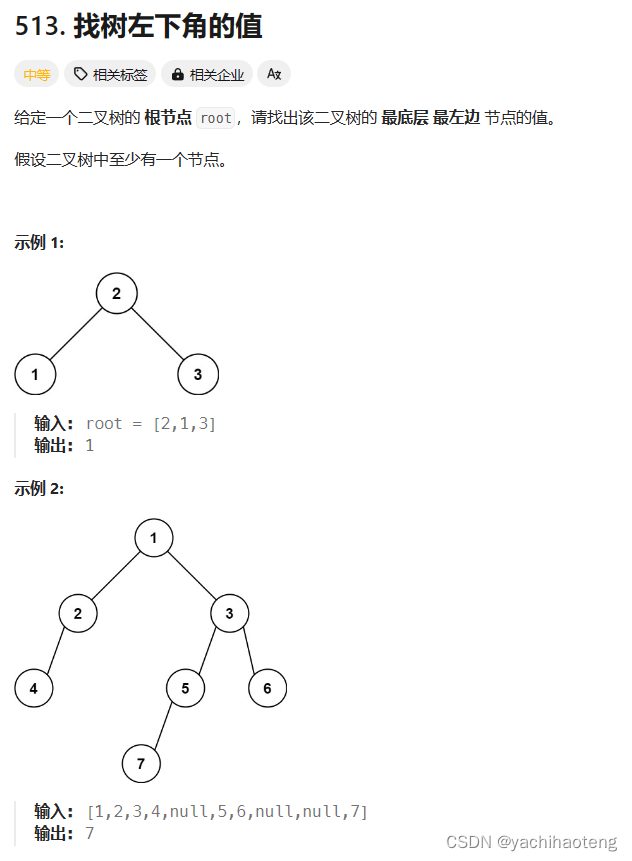
学习:注意是找到最底层最左边的值,而不是找到最左边的左节点。两者是有很大差别的,对于第二个示例就能看出,并且最底层最左边的值也未必是左节点,如果示例2中4有一个右节点,那最底层最左边的值就是4的右节点了。
代码:因此本题采用层序遍历最好理解,每次从左到右遍历,记入每次遍历的第一个节点,就是该层最左边的节点,直到找到最后一层。
//时间复杂度O(n)
//空间复杂度O(n)
class Solution {
public:
int findBottomLeftValue(TreeNode* root) {
queue<TreeNode*> que;
if(root != nullptr) que.push(root);
int result;
while(!que.empty()) {
int size = que.size();
result = que.front()->val;
while(size--) {
TreeNode* node = que.front();
que.pop();
if(node->left) que.push(node->left);
if(node->right) que.push(node->right);
}
}
return result;
}
};代码:本题还可以采用递归遍历的方式,使用前序,中序,后序都可以,这三种遍历方式都保证了先遍历左子树,再遍历右子树。注意每次更新result,只在进入到一个更大的深度,这样能保证记录的是最左边的值。
class Solution {
public:
//设置两个全局变量,保存最大深度和答案值,当然本题也可以将其放入函数当中,使用引用的方式
int maxDepth = INT_MIN;
int result;
void traversal(TreeNode* cur, int depth) {
if(cur->left == nullptr && cur->right == nullptr) {
if (depth > maxDepth) {
maxDepth = depth;
result = cur->val;
}
}
//注意必须得先遍历左边,左优先遍历,能够保证在找到最后一层的时候,赋值最左边的节点
if(cur->left) traversal(cur->left, depth + 1);
if(cur->right) traversal(cur->right, depth + 1);
}
int findBottomLeftValue(TreeNode* root) {
traversal(root, 0);
return result;
}
};112.路径总和
文档讲解:代码随想录路径总和
视频讲解:手撕路径总和
题目:
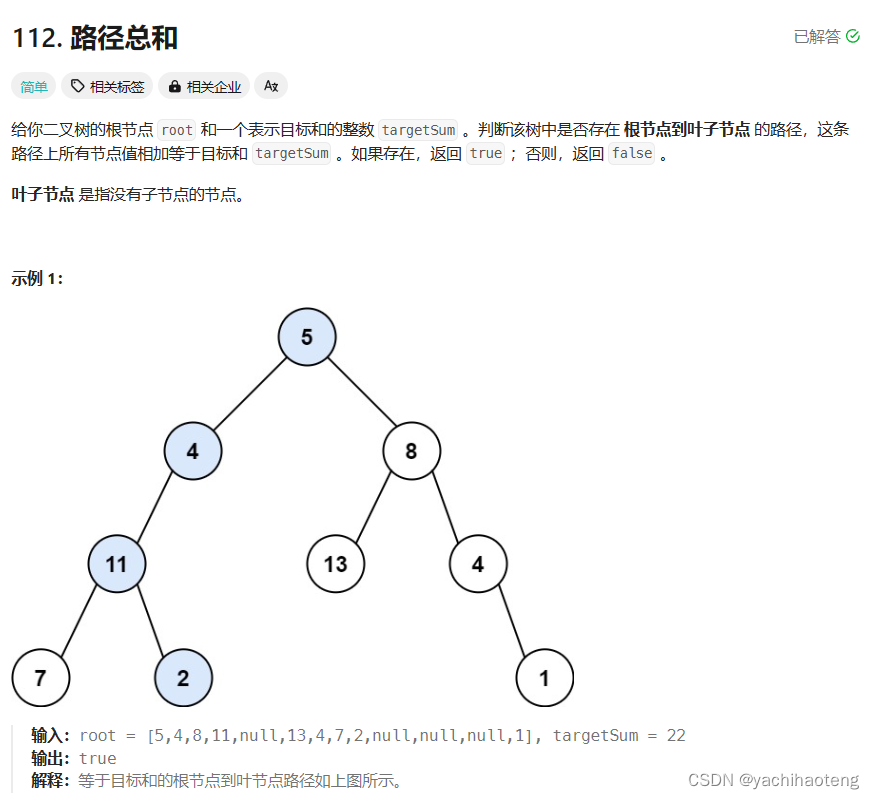

学习:
- 依据本题的意思,我们在遍历过程中,需要遍历到叶子节点才终止。注意本题不适合进行值的大小判断,因为本题的节点数值和目标值都是有可能是正,有可能是负的,因此不好设置大小判断条件。
- 本题可以采取前序遍历的方式,同时在遍历的过程中,不是累加各节点数值,而是通过对目标值的相减,来不断逼近目标值,这样更加的直观,且能减少不必要的变量。
代码:
//时间复杂度O(n)
//空间复杂度O(n)
class Solution {
public:
bool traversal(TreeNode* root, int count) {
//减掉当前节点的值
count -= root->val;
//确定终止条件,遍历到叶子结点
if(root->left == nullptr && root->right == nullptr && count != 0) return false;
if(root->left == nullptr && root->right == nullptr && count == 0) return true;
//确定单层递归逻辑,同时保证遍历过程中root不为nullptr
//count非引用方式,因此为自动进行回溯
if (root->left) {
if(traversal(root->left, count)) return true;
}
if (root->right) {
if(traversal(root->right, count)) return true;
}
return false;
}
bool hasPathSum(TreeNode* root, int targetSum) {
if (root == nullptr) return false;
return traversal(root, targetSum);
}
};113.路径总和II
题目:
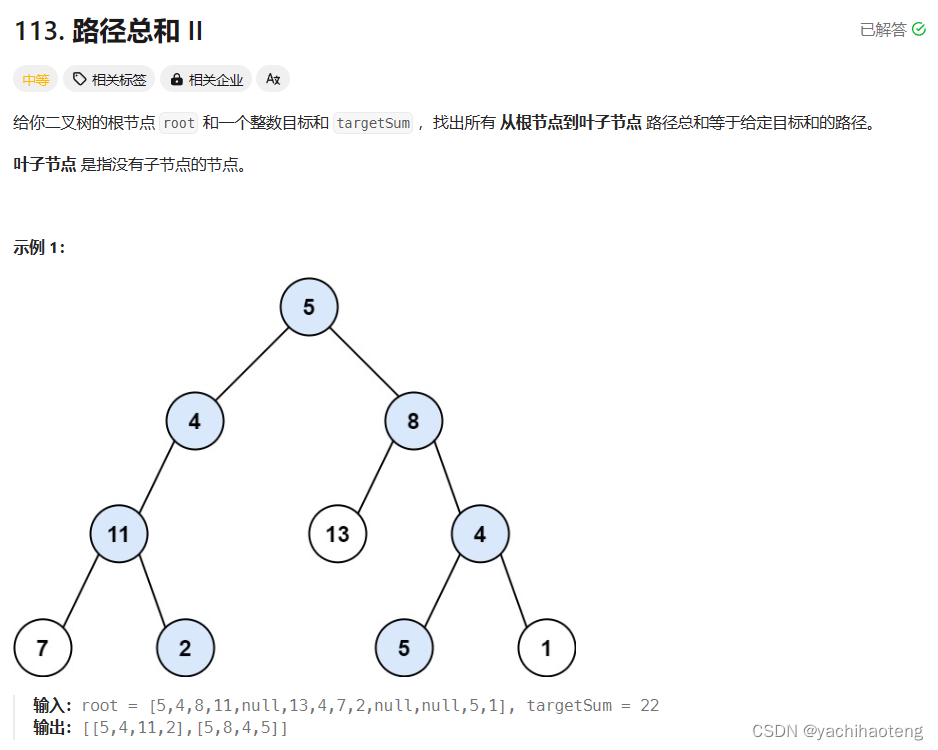
学习:
- 本题与上题不同的在于,要找到所有的数值之和等于目标值的路径。因此我们需要遍历所有的节点,同时要持续记录数值和路径两个变量。数值通过上题,我们知道可以通过目标值不断做减法来进行记录,路径则需要我们建立一个数组来进行保存。
- 本题还有一个值得注意的地方,我们在递归过程中如果需要不停改变一个变量,一般采用的是引用的方式。但其实也能采用全局变量的方式,将变量写在函数外,全局变量在递归中同样会不断的被改变。
代码:
//时间复杂度O(n)
//空间复杂度O(n)
class Solution {
public:
//构造两个全局变量,存储路径和结果,取代参数引用
vector<vector<int>> result;
vector<int> path;
//遍历树的节点,因为结果都储存在两个vector数组中,因此不需要返回值
void traversal (TreeNode* root, int sum) {
//确定终止条件
//找到叶子节点的时候进行判断
if(root->left == nullptr && root->right == nullptr && sum == 0) {
result.push_back(path);
return;
}
//如果sum!=0 直接返回
if(root->left == nullptr && root->right == nullptr) return;
//确定单层递归逻辑
if(root->left) {
path.push_back(root->left->val);
traversal(root->left, sum - root->left->val);
//对路径进行回溯
path.pop_back();
}
if(root->right) {
path.push_back(root->right->val);
traversal(root->right, sum - root->right->val);
path.pop_back();
}
return;
}
vector<vector<int>> pathSum(TreeNode* root, int targetSum) {
if(root == nullptr) return result;
path.push_back(root->val);
traversal(root, targetSum - root->val);
return result;
}
};106从中序与后序遍历序列构造二叉树
文档讲解:代码随想录从中序与后序遍历系列构造二叉树
视频讲解:手撕从中序与后序遍历序列构造二叉树
题目:
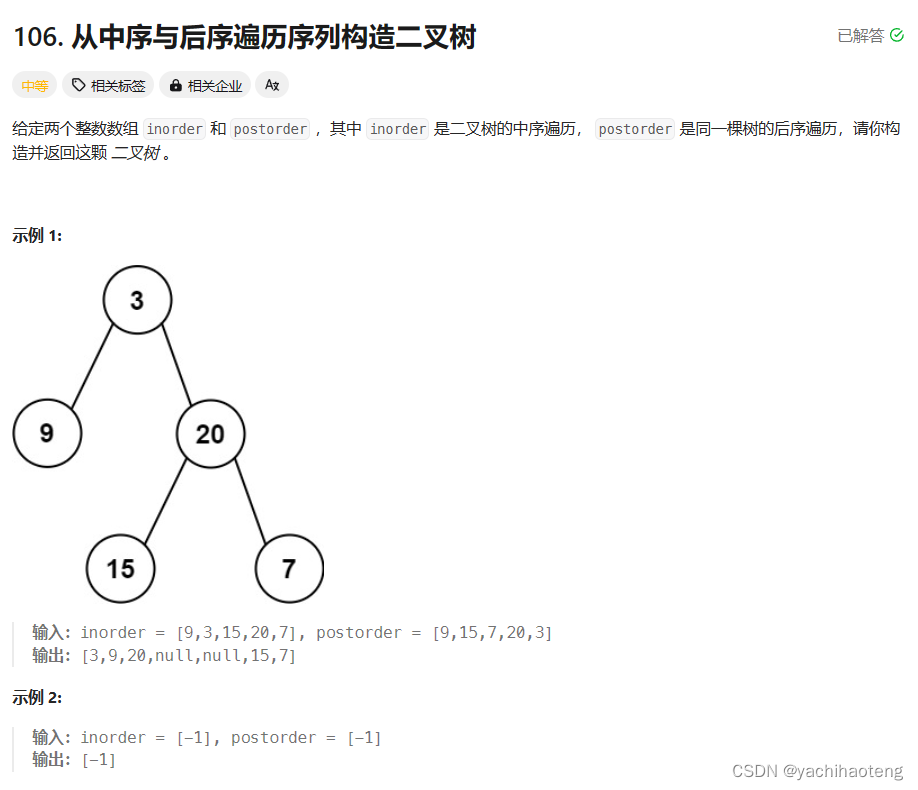
学习: 本题与KMP算法一样,都是数据结构中经典的例题之一。
- 依据后序遍历左右中的特点我们可以知道,最后一个节点一定是根节点。而根据中序遍历左中右的特点,当我们知道谁是根节点之后,在中序遍历中根节点左边的部分就为根节点的左子树,右边的部分就为根节点的右子树。
- 接着我们重复上述过程,当找到根节点的左子树和右子树有哪些节点后,我们在后序遍历中也能够把除最后一个节点(根节点)以外的点,分为左子树部分和右子树部分。相对的对于这两个部分而言,由于后序遍历左右中的特点,最后一个节点就为它们各自的根节点(整棵树的中间节点)。之后再从中序遍历中依次找到根节点的左右部分即可循环下去,直到确定所有节点的位置。
- 如果是在纸上进行作答的话,我们根据一次次循环就很容易能够把节点加上去。但是在代码中我们要十分注意递归循环的过程,不仅要设置递归三部曲,还要划分好每次循环过程中的左子树部分和右子树部分。
本题的代码过程可以分为六步:
- 如果数组大小为零,说明是空节点,返回
- 如果不为空,取后序遍历数组的最后一个元素作为根节点元素。
- 找到后序遍历数组最后一个元素在中序遍历数组的位置,作为左右子树切割点。
- 切割中序遍历数组,切成中序左数组和中序右数组。
- 切割后序遍历数组,注意这里分割的方法是通过第4部分割出的两个数组来进行分割的,因为中序遍历数组中,中序左数组的个数(左子树)一定和后序遍历数组中后序左数组(左子树)的个数是一样的,右子树同理。(其实我们在用纸笔解答的时候,也是通过中序遍历数组分割后的结果,来推导后序遍历数组中的左右子树部分)
- 递归处理左区间和右区间。
代码:
class Solution {
private:
TreeNode* traversal (vector<int>& inorder, vector<int>& postorder) {
if (postorder.size() == 0) return NULL;
// 后序遍历数组最后一个元素,就是当前的中间节点
int rootValue = postorder[postorder.size() - 1];
TreeNode* root = new TreeNode(rootValue);
// 叶子节点
if (postorder.size() == 1) return root;
// 找到中序遍历的切割点
int delimiterIndex;
for (delimiterIndex = 0; delimiterIndex < inorder.size(); delimiterIndex++) {
if (inorder[delimiterIndex] == rootValue) break;
}
// 切割中序数组
// 左闭右开区间:[0, delimiterIndex)
vector<int> leftInorder(inorder.begin(), inorder.begin() + delimiterIndex);
// [delimiterIndex + 1, end)
vector<int> rightInorder(inorder.begin() + delimiterIndex + 1, inorder.end() );
// postorder 舍弃末尾元素
postorder.resize(postorder.size() - 1);
// 切割后序数组
// 依然左闭右开,注意这里使用了左中序数组大小作为切割点
// [0, leftInorder.size)
vector<int> leftPostorder(postorder.begin(), postorder.begin() + leftInorder.size());
// [leftInorder.size(), end)
vector<int> rightPostorder(postorder.begin() + leftInorder.size(), postorder.end());
root->left = traversal(leftInorder, leftPostorder);
root->right = traversal(rightInorder, rightPostorder);
return root;
}
public:
TreeNode* buildTree(vector<int>& inorder, vector<int>& postorder) {
if (inorder.size() == 0 || postorder.size() == 0) return NULL;
return traversal(inorder, postorder);
}
};代码:本题也可以通过设置下标来设置左右子树区间
//时间复杂度O(n)
//空间复杂度O(n)
class Solution {
private:
// 中序区间:[inorderBegin, inorderEnd),后序区间[postorderBegin, postorderEnd)
TreeNode* traversal (vector<int>& inorder, int inorderBegin, int inorderEnd, vector<int>& postorder, int postorderBegin, int postorderEnd) {
if (postorderBegin == postorderEnd) return NULL;
int rootValue = postorder[postorderEnd - 1];
TreeNode* root = new TreeNode(rootValue);
if (postorderEnd - postorderBegin == 1) return root;
int delimiterIndex;
for (delimiterIndex = inorderBegin; delimiterIndex < inorderEnd; delimiterIndex++) {
if (inorder[delimiterIndex] == rootValue) break;
}
// 切割中序数组
// 左中序区间,左闭右开[leftInorderBegin, leftInorderEnd)
int leftInorderBegin = inorderBegin;
int leftInorderEnd = delimiterIndex;
// 右中序区间,左闭右开[rightInorderBegin, rightInorderEnd)
int rightInorderBegin = delimiterIndex + 1;
int rightInorderEnd = inorderEnd;
// 切割后序数组
// 左后序区间,左闭右开[leftPostorderBegin, leftPostorderEnd)
int leftPostorderBegin = postorderBegin;
int leftPostorderEnd = postorderBegin + delimiterIndex - inorderBegin; // 终止位置是 需要加上 中序区间的大小size
// 右后序区间,左闭右开[rightPostorderBegin, rightPostorderEnd)
int rightPostorderBegin = postorderBegin + (delimiterIndex - inorderBegin);
int rightPostorderEnd = postorderEnd - 1; // 排除最后一个元素,已经作为节点了
root->left = traversal(inorder, leftInorderBegin, leftInorderEnd, postorder, leftPostorderBegin, leftPostorderEnd);
root->right = traversal(inorder, rightInorderBegin, rightInorderEnd, postorder, rightPostorderBegin, rightPostorderEnd);
return root;
}
public:
TreeNode* buildTree(vector<int>& inorder, vector<int>& postorder) {
if (inorder.size() == 0 || postorder.size() == 0) return NULL;
// 左闭右开的原则
return traversal(inorder, 0, inorder.size(), postorder, 0, postorder.size());
}
};105.从前序与中序遍历序列构造二叉树
题目:
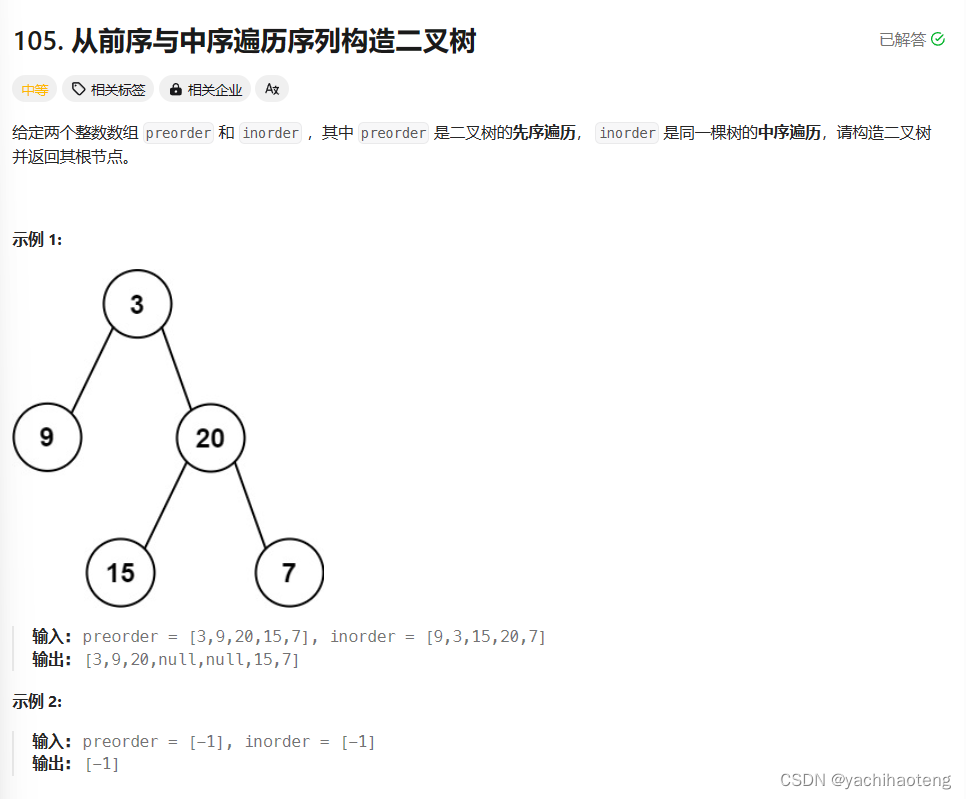
学习:本题和上一题一样,只不过后序换为前序遍历后,根节点的寻找变为了找前序遍历数组的第一个节点作为根节点,剩下的同样是依据需要划分不同左右子树区间,进行递归。
代码:
//时间复杂度O(n)
//空间复杂度O(n)
class Solution {
private:
TreeNode* traversal (vector<int>& inorder, int inorderBegin, int inorderEnd, vector<int>& preorder, int preorderBegin, int preorderEnd) {
if (preorderBegin == preorderEnd) return NULL;
int rootValue = preorder[preorderBegin]; // 注意用preorderBegin 不要用0
TreeNode* root = new TreeNode(rootValue);
if (preorderEnd - preorderBegin == 1) return root;
int delimiterIndex;
for (delimiterIndex = inorderBegin; delimiterIndex < inorderEnd; delimiterIndex++) {
if (inorder[delimiterIndex] == rootValue) break;
}
// 切割中序数组
// 中序左区间,左闭右开[leftInorderBegin, leftInorderEnd)
int leftInorderBegin = inorderBegin;
int leftInorderEnd = delimiterIndex;
// 中序右区间,左闭右开[rightInorderBegin, rightInorderEnd)
int rightInorderBegin = delimiterIndex + 1;
int rightInorderEnd = inorderEnd;
// 切割前序数组
// 前序左区间,左闭右开[leftPreorderBegin, leftPreorderEnd)
int leftPreorderBegin = preorderBegin + 1;
int leftPreorderEnd = preorderBegin + 1 + delimiterIndex - inorderBegin; // 终止位置是起始位置加上中序左区间的大小size
// 前序右区间, 左闭右开[rightPreorderBegin, rightPreorderEnd)
int rightPreorderBegin = preorderBegin + 1 + (delimiterIndex - inorderBegin);
int rightPreorderEnd = preorderEnd;
root->left = traversal(inorder, leftInorderBegin, leftInorderEnd, preorder, leftPreorderBegin, leftPreorderEnd);
root->right = traversal(inorder, rightInorderBegin, rightInorderEnd, preorder, rightPreorderBegin, rightPreorderEnd);
return root;
}
public:
TreeNode* buildTree(vector<int>& preorder, vector<int>& inorder) {
if (inorder.size() == 0 || preorder.size() == 0) return NULL;
// 参数坚持左闭右开的原则
return traversal(inorder, 0, inorder.size(), preorder, 0, preorder.size());
}
};注:本题还能采用迭代的方式,等我二刷试试。
总结
今天题目虽然不多,但是难度都很大,需要反复学习理解。
- 左下角的值要避免成为找最左边的左叶子节点的值。
- 路径总和要注意对路径中数值的处理,以及路径总和II中对每一条路径的保存和回溯,都需要注意。
- 从中序与后序遍历构造二叉树和从前序与中序遍历构造二叉树,理解上虽然没什么问题,但是代码书写上难度很大,还需要多加练习。
